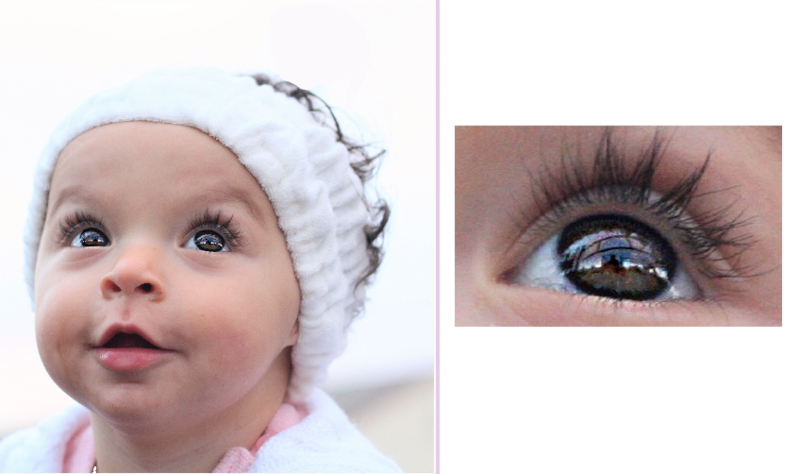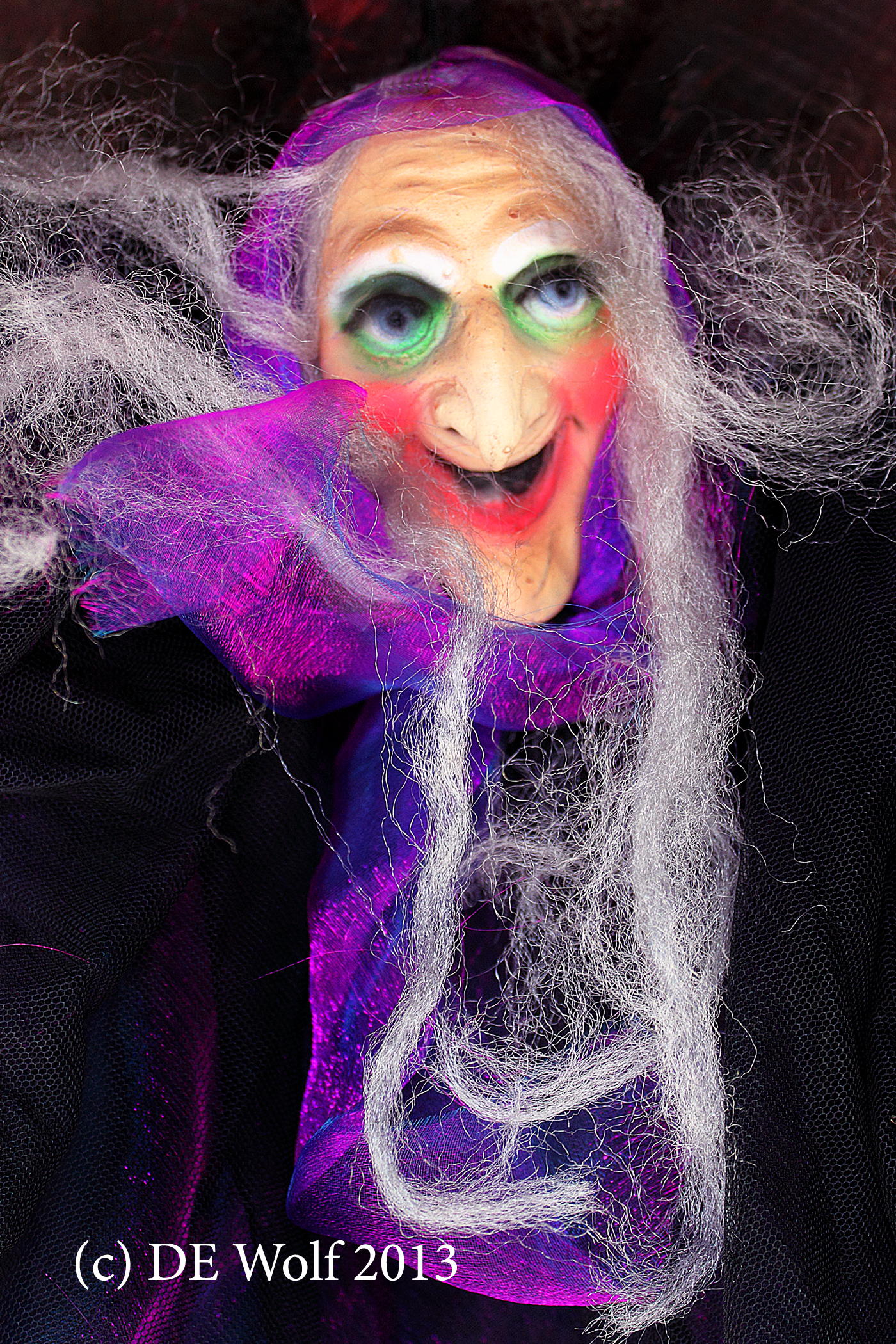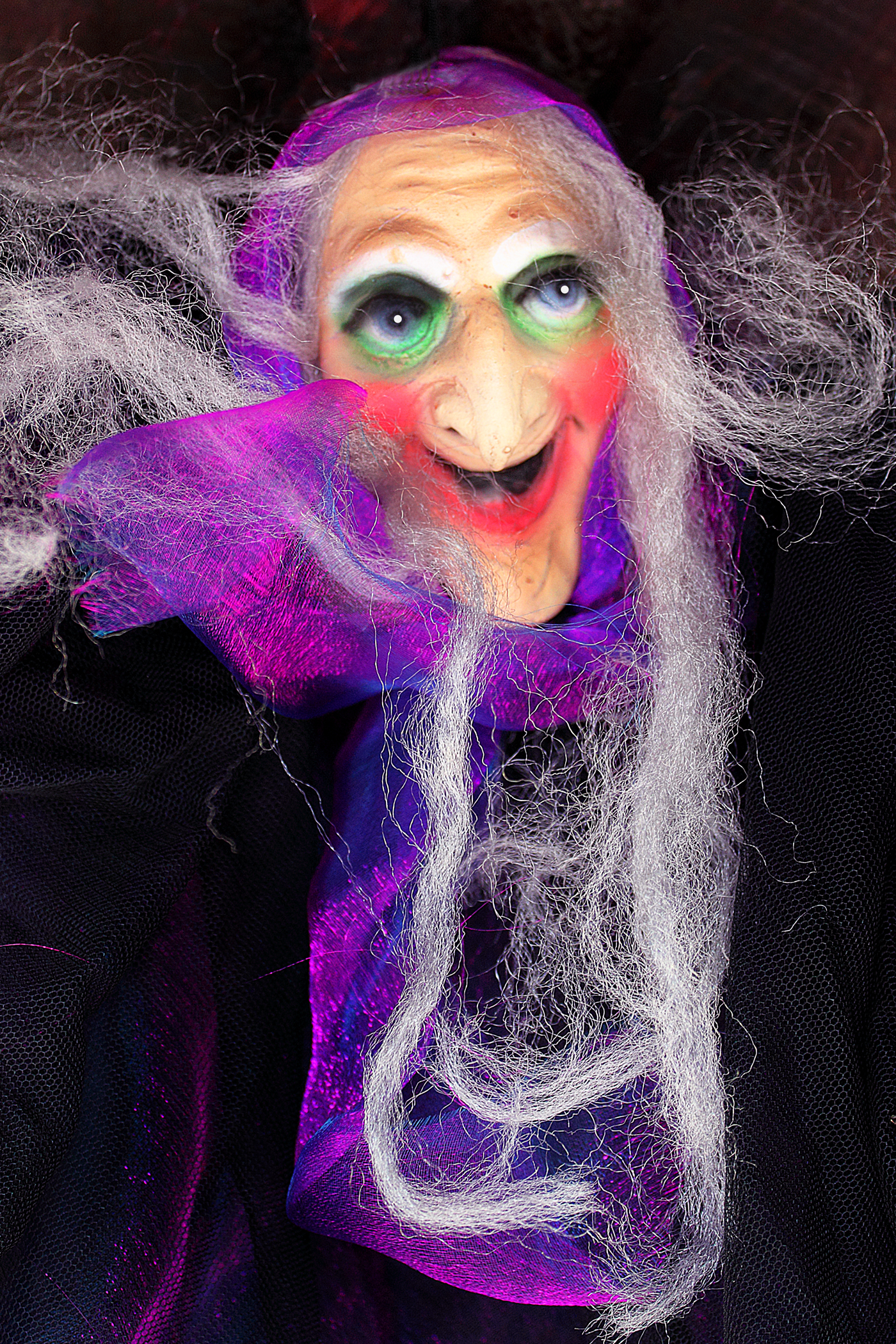Recently I posted a series of Halloween photographs. When I started this project, I took the image shown in Figure 1. She is a happy witch, not menacing, but something seems wrong with the photograph. Somehow the witch is listless and unlifelike. The reason for this is that her eyes lack the phenomenon of “catch light,” which is, simply put, the reflection of the illuminating light off the cornea of the eyes. The cornea is the clear, wet surrounding layer. Catch light is essentially the sparkle in one’s eyes. The most common form of catch light is that which forms from a flash. Since flashes usually are, like the sun, point sources of light, the catch light often appears as a bright dot in the dark center of the eye, within the pupil.
Take a look at Figure 2, which a funerary portrait of a young Egyptian boy. I chose this image because it is nearly two thousand years old. So while it is not a photograph it is still pretty lifelike, and the two catch light bright spots in the eyes really brings the boy to life, or back to life.

Figure 2 – Funerary portrait of a young Egyptian boy, From the Wikimedia Commons originally uploaded by Juanmak and in the public domain.
Catch light does not have to be bright spots. This is shown in Figure 3. Indeed, the eyes are portals to the soul and mirror whatever is in front of them. This has been used to great effect in several mystery stories where the plot hinges on blowing up the catch light to reveal the “murderer” or other detail in the mystery,
Catch light has played an important role in the movies. Directors often light up the sparkle in the eyes of starlets to make them more vibrant and glamorous, for instance Ingrid Bergman in “Casablanca.” On the other hand, catch light is removed from the eyes of bad guys to create a sense, like our witch and others in my Halloween series, of the sinister and ominous.
So what about our witch. Since I wanted a happy lifelike witch I use Adobe Photoshop to add two catch light spots to her eyes. I have also used the same trick when I remove red eye. The process of removing red eye often simultaneously removes catch light and re-adding it with little bright spots adds to the

Figure 3 – Baby with sparkle or catch light in its eyes. From the Wikimedia Commons original by Christine B. Szeto and put into the public domain under creative commons license.
sense of vitality. In fact, if you think about it red eye is itself a kind of bad catch light. It is a reflection of the light source off the retina. This is particularly extreme in animals like cats that have a special layer called the tapetum lucidum which reflects light that passes through the retina back onto it, thus improving their night vision. Of course, if you want your cat to look sinister and evil, real cats are never evil, leave the red eye.
As Figure 4, I show again the final image of the witch. All of the processing is the same as Figure 1 now with catch light added.



Pingback: Imaging a new future | Hati and Skoll Gallery